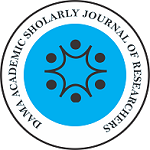Authors: Syarifah Nurul Maulidah1, Yulistiani2
1,2Department of Clinical Pharmacy, Faculty of Pharmacy,
Airlangga University, Gubeng, Surabaya, East Java, Indonesia
Email: syarifahnurulmaulidah@gmail.com
Abstract
Acute lymphoblastic leukemia (ALL) occurs in a large number of children in every year and requires long period chemotherapy treatments. Methotrexate is an antifolate most widely used as anticancer therapy. In pediatric oncology, methotrexate (MTX) is commonly used in the treatment of acute lymphoblastic leukemia (ALL), non-Hodgkin’s lymphoma, osteosarcoma, and brain tumors. This success is due to the selection of effective chemotherapy. To assess the effectiveness of methotrexate, it is necessary to examine the pharmacokinetic aspect, although there is a large variability between patients. MTX is a nonlinear Michaelis-Menten pharmacokinetics or dose-dependent. The basic parameters are clearance, distribution volume, and half-life elimination can vary based on kidney function, liver function, age, and other factors; including emesis and drug use along with administration of methotrexate. This phenomenon occur because one or more of the kinetic processes (absorption, distribution, and/or elimination) of MTX which occur through a mechanism that is not in the first order of kinetics. Therefore, the relationship between AUC or plasma concentration at the time of administration under steady state conditions and the dose given is not linear.
Keywords: Pharmacokinetics, High dose Methotrexate, Acute Lymphoblastic Leukemia.

